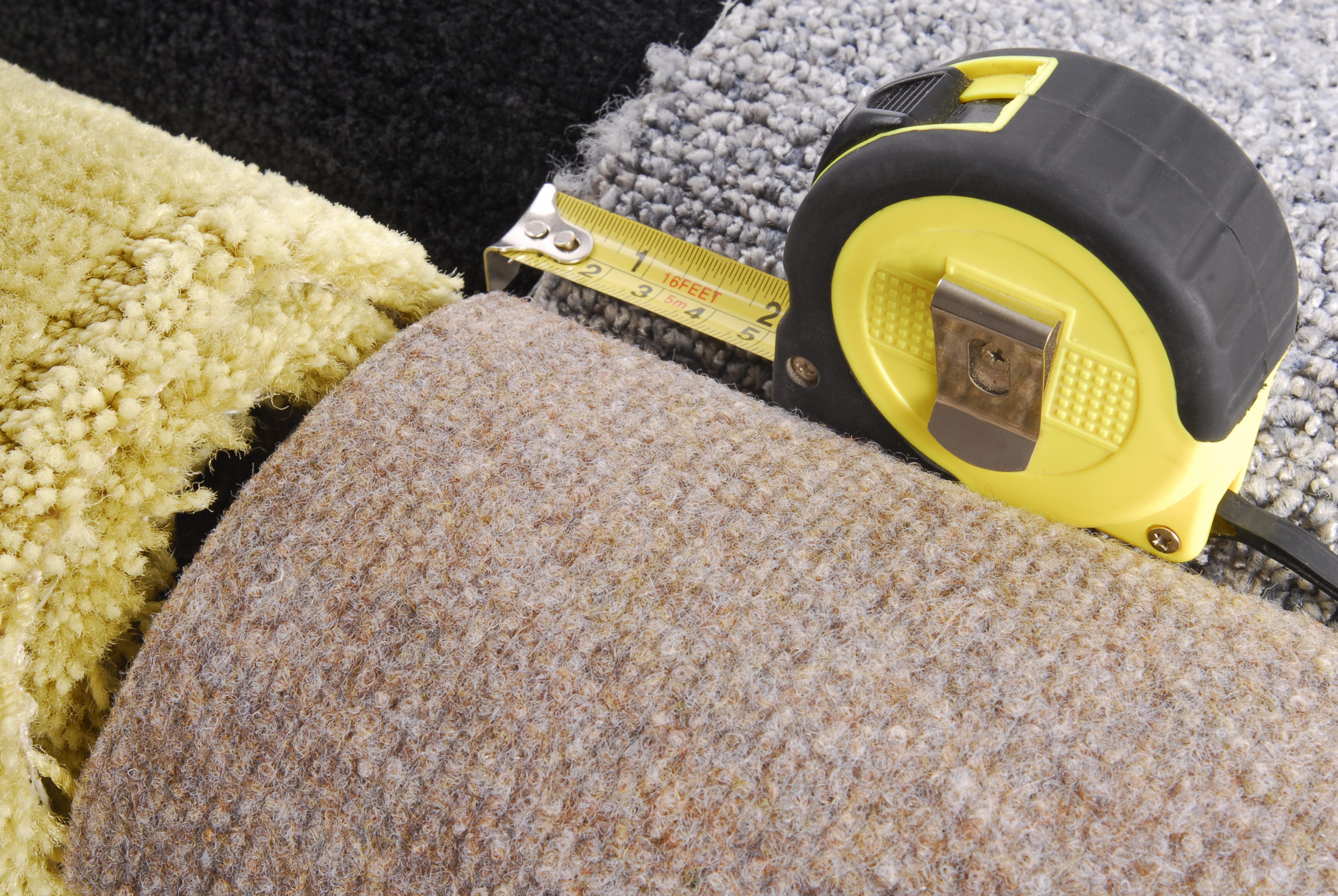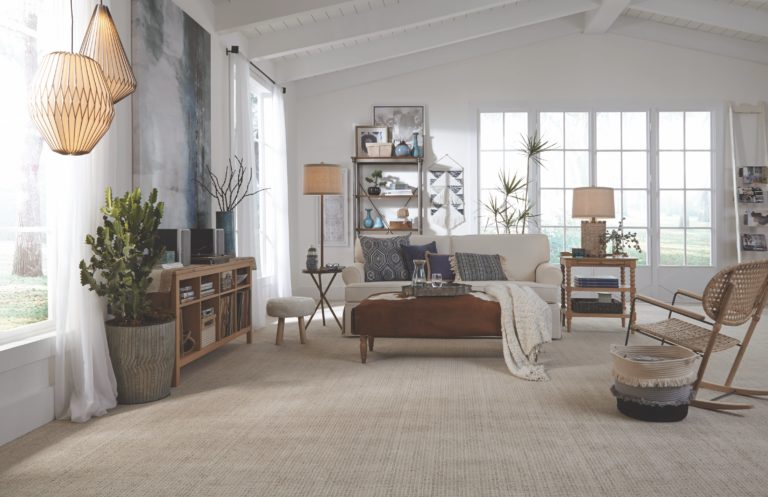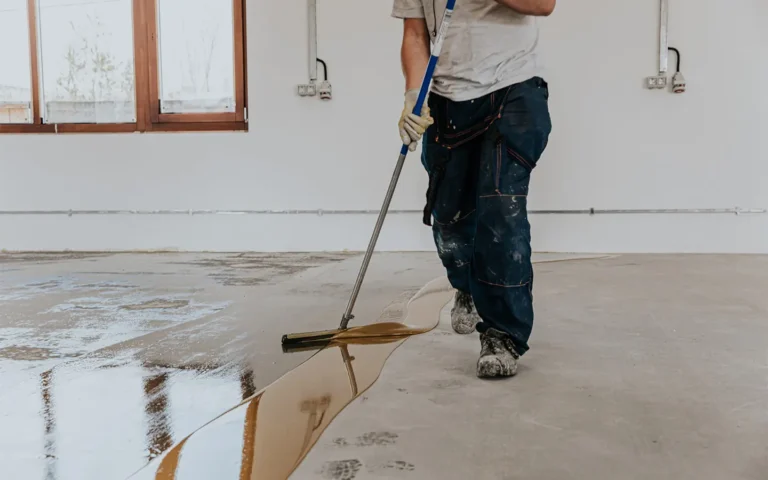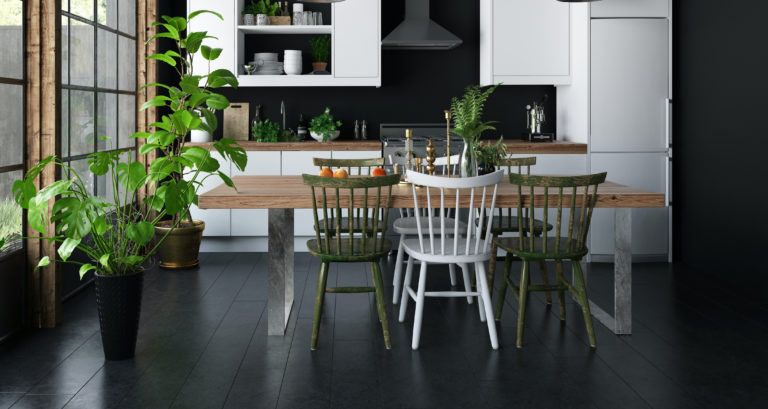This post may contain references or links to products from one or more partners of our parent company and/or subsidiaries of our parent company. For more information, visit this page.
February 4, 2022
Cut pile vs. loop pile carpet: is one better than the other? Is one more comfortable than the other? Is one more durable than the other?
Don’t worry, friend. We’re here to give you all the info you need on these different types of carpet. Specifically, we’re here to explain all there is to know about cut pile carpet and loop pile carpet!
In this side-by-side comparison, we’ll show you:
- Everything you need to know about carpet construction
- The different types of cut carpets and loop carpets you can buy
- The pros and cons of cut pile carpets vs. loop pile carpets
By the time you’re done reading, you’ll know everything there is to know about both cut pile carpets and loop carpets—particularly, which one is right for you! Sound good? Let’s get started!
Oh, and if you want to know about the best carpet brands after reading this article, just click that link!
Carpet Construction: The Basics
Like all types of flooring, there are many elements to a carpet. We won’t get into all the different variables that make up a carpet, but we will talk about the 3 most important ones:
- Carpet Fiber
- Carpet Pile Style
- Carpet Pile Height
You also have measurements like pile density (how much fabric is used in a given area), face weight (how much the carpet weighs per square yard), carpet backing, as well as carpet padding (which is sort of like underlayment for vinyl flooring).
However: since our goal here is to compare cut pile carpet with loop carpets, we’re not going to get into those aspects here (but our guide on the different types of carpet is an excellent resource if you’re curious).
Lastly, we should probably note that this article doesn’t explicitly apply to peel-and-stick carpet tiles, which fall into their own category (here’s how to install carpet tiles, if you’re curious). So without further ado, let’s go into these elements in detail!
Understanding Carpet Fiber
The type of fiber a carpet is made from can impact everything from its feel and texture to its overall quality. Here are the most common carpet fiber options (and keep in mind, these materials can all be used in both cut pile carpet and loop pile carpets):
Nylon
Nylon is a synthetic fiber that’s durable, versatile, and stain and moisture resistant—though not fully waterproof like, say, waterproof laminate flooring or waterproof vinyl flooring.
The best carpet brands primarily use two types of nylon: 6,0 and 6,6. Most lower-end nylon carpets you see are made of the former, though type 6,6 is superior in most ways.
Notable carpet brands that make type 6,6 nylon carpets include Proximity Mills, Karastan, and Stainmaster. While Stainmaster was the original type 6,6 nylon carpet, the brand has since been sold to Lowes with a…let’s say “less-than-stellar” response from the flooring industry.
Polyester
Polyester is a shade less popular than nylon, though it performs similarly. Solution-dyed options like the ones made by Newton (who also makes 6,6 nylon carpets) are the most durable type of polyester product—though ordinary polyester carpets offer decent value as well.
Like nylon, polyester isn’t totally waterproof, but survives moisture a little better than water-resistant wood flooring, for example.
Polypropylene
Polypropylene (or olefin) carpets offer the best water resistance but are otherwise thought of as a true budget option. They can be very soft, but they sometimes have a waxy feel and don’t stand up to wear and tear as well as nylon or polyester.
Wool
Wool and wool blends are the most commonly available natural-fiber carpets. They’re highly durable and very comfortable when well maintained, though they sometimes lack in stain resistance.
And of course, if you want environmentally friendly flooring, wool carpet isn’t a bad choice since it’s sustainably sourced from sheep. Doma and Fabrica are two companies that specialize in wool and wool-blend carpets.
Bonus fact: until the 20th century, almost all carpet was made from wool!
Triexta
And finally, we have triexta. This relatively new fiber is actually a type of polyester that’s partially made from natural materials, and it’s right up there with nylon when it comes to durability. Mohawk’s SmartStrand and Lees carpet are good examples of triexta-based products.
Best Brands of 2024
Understanding Carpet Pile
In simple terms, a carpet’s pile refers to how its fibers are sewn into the backing (i.e. the carpet’s foundation). More dramatically: carpet pile plays the starring role in determining a carpet’s texture, look, and performance.
There are 3 main types of carpet pile:
- Cut pile carpet
- Loop pile carpet
- Cut-and-loop carpet
Carpet Pile Height
Carpet pile height simply refers to how long a carpet’s pile is, and it’s split into 3 categories.
- Deep (or high) pile is the longest. It’s generally the most comfortable option but sometimes at the expense of durability (though, the longer fibers can hide damage).
- Low pile carpets have the shortest carpet fibers and are typically the most durable of the bunch, but often sacrifice comfort.
- And medium pile pile carpets balance the two!
The 3 Basic Styles of Carpet Pile: More Detail

Getting back to our cut pile vs. loop pile conversation: let’s talk, in detail, about the key features of cut pile carpets and loop pile carpets (plus cut-and-loop pile carpets, which, as we mentioned, are a combination of the two).
Before we get into our comparison, though it’s worth noting that the differences here aren’t as drastic as, say, the differences between engineered hardwood vs. laminate (and what is engineered hardwood, anyways?). Cut pile carpet and loop carpets are still made from the same materials; only the construction process is different!
Cut Pile Carpet
The fibers of cut pile carpet are (as you might imagine) cut at a specific height and then twisted into tufts to create a comfortable, uniform texture. Broadly speaking, cut pile carpets are very comfy and look fantastic.
Loop Pile Carpet
With loop carpets, on the other hand, the fibers are literally looped back into the carpet backing. Loop pile carpet tends to be less flashy than cut pile carpet, but the trade-off is that it’s more durable.
Cut-and-Loop Pile Carpet
Cut-and-loop pile carpet combines both pile styles to create elaborate textures and designs.
What Different Types of Cut Pile Carpet Exist?
When we talk about cut pile carpets and compare cut pile vs. loop pile products, we’re not just talking about 1 uniform type of carpet. Rather, we’re talking about a lot of different types of carpet—all of which just happen to be cut pile. Here are the different types of cut pile carpets:
Saxony
Saxony is one of the most commonly available types of carpet on the market.
This material has a medium pile height and can be tufted in the same direction, creating a subtle color difference when you brush your hand over it, or in different directions to hide footprints and vacuum marks.
Frieze
Frieze carpet has a deep pile with twisted carpet fibers. The texture is almost unbelievably comfortable, but can also come with a steeper price than Saxony carpet (and it’s harder to clean).
Plush
Plush carpet comes in all pile heights, but generally takes on a slightly less uniform appearance than Saxony carpet.
If you want to balance durability with comfort, plush carpet is your best flooring choice.
Plush carpet’s existence is one of the reasons people have a hard time choosing between carpet or hardwood in the bedroom. Hardwood is beautiful, but plush carpet is so snug, cozy, and luxurious, it’s hard to ignore (learn all the differences between carpet vs. hardwood here, if you’re interested).
What Is a Twist Pile Carpet?
No trickery here: a twist pile carpet is simply any cut pile carpet that’s fibers have been twisted rather than staying straight. So, many cut pile carpets are also twist pile carpets—frieze, for example.
Bonus: What’s the Difference Between Cut Pile Carpet and Essex Carpet?
We came across a few people asking if there’s a difference between cut pile carpet and Essex carpet. As it turns out, Essex carpet is a type of plush, cut pile carpet that’s almost always made of nylon.
Why the confusion? Essex carpet is what automotive manufacturers call the carpet lining the interior cabin of cars and trucks.
The Pros and Cons of Cut Pile Carpet
Now, let’s talk about the advantages and disadvantages of cut pile carpet.
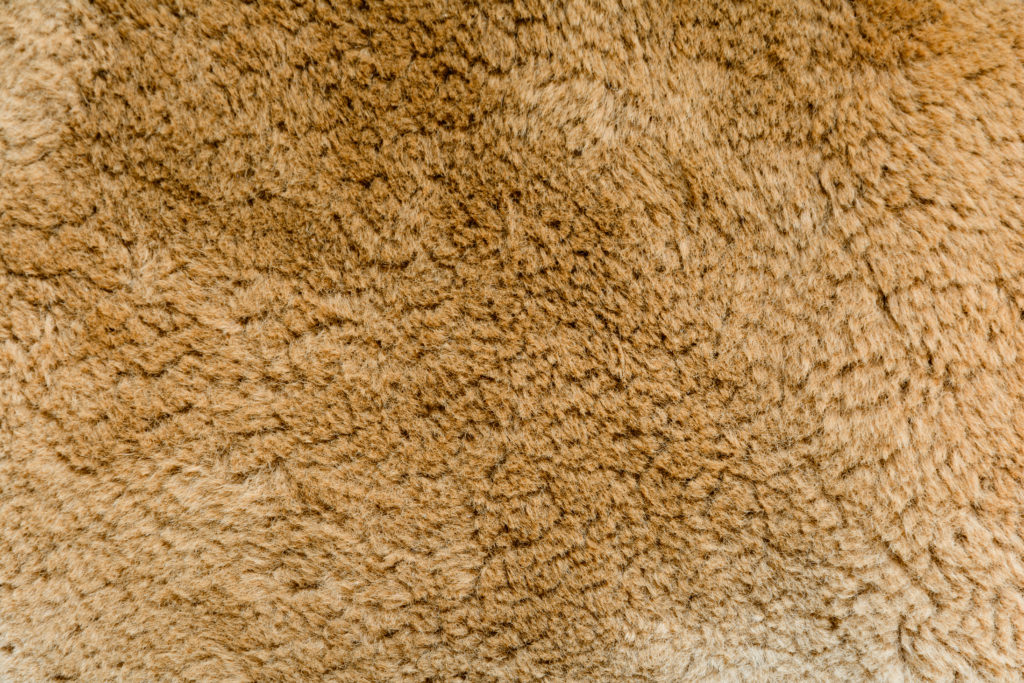
Pro: Cut Pile Carpets Are Easy to Vacuum and Maintain
Cut pile carpet is easy to clean and maintain. Simply vacuum it every once in a while and you shouldn’t have any issues.
That said, we don’t recommend using any type of carpet, cut pile or otherwise, for applications where water may be an issue (like mudroom flooring). Being easy to clean is one thing—being able to deal with water is another. For those instances, we’d recommend a hard surface like EVP flooring (a type of luxury vinyl made by many of the best vinyl plank flooring brands) for applications like this.
Pro: They’re Usually Softer Than Loop Carpets
There are exceptions, but cut pile carpet is softer than loop pile carpet—especially plush and frieze varieties. If you want soft floors, you really can’t go wrong with cut pile carpet.
Sidenote: if you’re not a carpet fan but want softer floors, you’re not out of luck. Some hard-surface floors like WPC flooring (a high-tech form of PVC flooring) or the best cork flooring offer a little more cushion than your average hardwood floor.
Con: Cut Pile Carpets Can Show Footsteps (Especially if the They Have a Deep Pile Height)
One downside of some cut pile carpets—particularly high-pile ones that don’t have twisted fibers—is that they have the tendency to show footsteps. The deeper the pile, the more pronounced those steps will appear.
Without upkeep, cut pile carpet may start matting in places, creating a non-uniform look. Carpets with a heavy twist are, however, more resistant to this.
Of course, if you want to avoid the presence of footsteps or other ghost marks on your floor, a hard-surface floor is the way to go. All the different types of wood flooring, hardwood floor alternatives, and types of tile won’t show footprints when you step on them (unless, well, you have dirty shoes or feet, of course).
Con: Cut Pile Carpet Breaks Down Faster Than Loop Pile Carpet (On Average)
Lastly, while cut pile carpets are durable in general, they’re not as durable as loop carpets.
We won’t get into the physics of it, but essentially, loop pile carpet fibers have twice as much support because they’re anchored into the backing twice, whereas cut pile carpet fibers are (surprise!) cut so they’re only held on one end.
Additionally, cut pile carpets can lose their tufting over time, which can cause them to fray and lose their texture.
But don’t worry, most high-quality cut pile carpets are designed to last for a couple of decades at least (with maintenance).
What Different Types of Loop Pile Carpet Exist?
Okay: onto the different types of loop pile carpet!
Berber
Modern berber is a common version of loop pile carpet and it’s well-loved for its outstanding durability and easy maintenance. It has a low pile and tightly woven appearance that give it a rougher texture compared to most other carpets.
As such, the main downside of berber carpet is that it’s not particularly comfortable (compared to other types of carpet, at least).
Sidenote: modern berber carpets are very different from hand-woven, traditional berber carpets from North Africa.
Sisal
Sisal carpet is sort of an oddity because it’s exclusively made from fibers from sisal plants, which are indigenous to Mexico. This loop pile carpet is pretty much made in the same style as berber carpet except the fibers are thicker, giving the carpet an almost coarse texture.
Level Loop Pile
Level loop pile carpet is similar to berber carpet in that the pile is tightly woven and has a uniform height. It’s remarkably easy to clean and a great choice for commercial spaces that see a lot of foot traffic.
Multi-Level Loop Pile (aka Textured Loop Carpet)
Multi-level loop carpets, which are sometimes called textured loop carpets, combine 2 or more loop pile heights to create a more varied feel and in some cases, intricate patterns (hence, “textured” loop carpet). Despite the non-uniform appearance, these loop pile carpets retain their durability because of their tight weave.
Pros and Cons of Loop Pile Carpet
Loop carpets score very well in terms of durability, but at a cost. Here are the advantages and disadvantages of loop pile carpet!
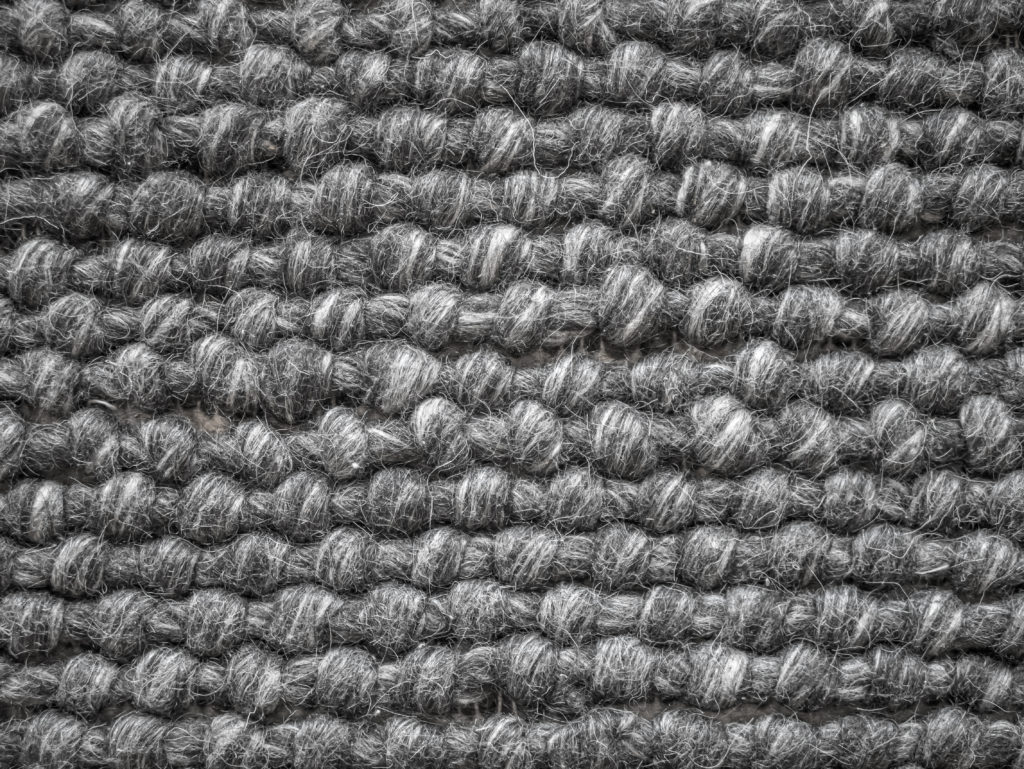
Pro: Loop Carpets Are Generally More Durable Than Cut Pile Carpets
First, a clarification: we definitely wouldn’t say that a polypropylene loop carpet is more durable than a type 6,6 nylon cut pile carpet—carpet fiber is still a very important piece of the puzzle—but loop carpet’s low pile and tight weave make it supremely durable in general.
For example, it’s some of the best flooring for basements (carpet-wise) because it can handle small environmental changes and rigorous use. Additionally, it’s usually suitable for stair installations because it can handle more traffic (but like the best vinyl plank flooring for stairs, make sure it’s covered by the warranty).
Of course, loop carpets won’t outperform the best hardwood floors or the best laminate flooring so if you want the most durable floors, these are better choices.
Pro: They Minimize the Appearance of Footsteps
Because they’re low pile by default, loop carpet typically won’t show footsteps. But if footsteps are visible, they’ll likely be so minimal you’d have to really look for them.
That said, if you want to make sure that your guests never see your footprints (self-conscious, we get it), remember: a hard surface floor is the way to go. Hardwood, fake wood flooring, and tile products won’t leave prints (again, unless someone has dirty feet—blech).
Pro: Loop Pile Carpets Tend to Offer More Texture Options
While loop carpets may not be as comfortable as cut pile carpets, they can offer more varied textures—especially multi-level loop carpets. The options available, while obviously different, are as limitless as wood floor designs.
Con: Carpet Loops Can Snag on Things
Low pile carpets are likely omitted from this, but loop carpets can snag on things if their loops come loose.
If you’re looking for the best flooring for dogs or pets, make sure your loop carpet has a very low pile or expect torn-up floors and/or hurt pet paws (sad). Rigid core luxury vinyl flooring is a better choice for pets.
Con: Loop Carpets Aren’t Always as Comfortable as Cut Pile Carpets
A general statement for sure, but loop pile carpet doesn’t typically emphasize comfort; its priorities are functionality and durability.
That said, medium pile loop carpets are comfy—just don’t forget that the loops may snag if they come loose.
Cut Pile vs. Loop Pile Carpet: Which is Better?
And here we are: the question at the center of this article. Cut pile vs. loop pile carpet: who’s the winner? Well…
Is Cut Pile Better Than Loop Pile?
If you prize comfort over durability and longevity, then absolutely. Loop carpets can be comfortable, but even the comfiest loop pile carpet is going to have a hard time competing with plush cut pile carpet.
So, Is Loop Pile Better Than Cut Pile Then?
You can probably guess where this is going: loop carpets are the better choice if you care about durability and longevity over comfort.
In other words: the cut pile vs. loop pile carpet debate doesn’t really make sense because the carpet styles are trying to achieve different goals.
Wait, So Loop Carpet Does Last Longer?
A lot of factors are at work here, but yes, loop pile carpet usually outlasts cut pile carpet because it stands up to wear and tear better. But it’s entirely possible, and even likely, for a high-quality cut pile carpet to last longer than a low-quality loop pile carpet.
If durability and longevity are your ultimate concerns, though, the best vinyl flooring or most durable wood flooring are better choices though (check out carpet vs. hardwood for all the differences).
Is Loop Carpet More Expensive Than Cut Pile Carpet?
Actually, we’ve found that carpet prices depend more on the materials and the brand than whether the carpet has a loop or cut pile.
While you can expect to pay a little more for products made by the best carpet brands, many types of carpet are cheaper than other floors. For example, the cost of wood flooring can easily run into the high $20s per square foot (when factoring install costs too) while great carpet can be bought and installed for around $5–$8/sq. ft. (or less).
What About Carpets That Have Both Cut and Loop Pile (aka Sculpted Pile)?
Lost in the cut pile vs. loop pile debate are carpets with both types of pile. Also called sculpted pile carpets, cut-and-loop carpets emphasize looks as opposed to comfort or durability (though, high-end cut-and-loop carpets can be all 3).
In terms of available patterns, the options are often elaborately designed, much like luxury wood floor patterns (such as parquet flooring). As such, these carpets tend to cost more too.
Bonus: a fun way to mix up your floor textures without buying a luxury carpet is to put a rug on a carpet!
Cut Pile vs. Loop Pile Carpet: How to Choose the Best Carpet for You
If you’re having trouble deciding between cut pile vs. loop pile carpet, first ask yourself if you want to prioritize comfort or durability.
If you want a cozy, warm hug every time you step out of bed, go with a cut pile carpet—if you want something that’ll last for decades (with upkeep), loop carpets are hardier.
That said, there are many types of carpet that try to balance comfort and durability. Start on one end of the spectrum and work your way towards the option that’s right for you!
Also, don’t forget about carpet fiber types (like nylon vs. triexta) as well as other key features.
For example, if you’re worried about harmful chemicals, it’s best to go with a product that’s certified as low-VOC carpet—low-VOC flooring is deemed safe by third parties, so you don’t have to worry about a brand claiming one thing only to sell another.
Conclusion
And we’re done! You should now have a good idea of whether cut pile or loop pile carpet is right for you!
One last thing, though: we do recommend that no matter which option you choose—cut pile carpet or loop carpet—shop at a top-rated local flooring store over a big box retailer like Sam’s Club, Home Depot, or Lowes.
Local flooring stores are staffed by people who can actually discuss your flooring ideas with you and know what they’re talking about. Plus, they carry the best and most diverse range of products, while big box stores only aim to please general markets.
Regardless of your choice, we hope this guide served you well! If you’re still itching to learn more about flooring, please feel absolutely free to check out the articles below—from the best carpet brands to just about anything else you’d ever need to know about flooring!
Vinyl Resources:
- Shaw Vinyl Plank Flooring Reviews 2022
- Best Mannington Vinyl Flooring Reviews 2022: Adura Max, Rigid, & More
- COREtec Flooring Reviews: Plus, Pro Plus, & More
- SmartCore Flooring Reviews: Is it Worth it?
- LifeProof Vinyl Flooring Reviews: Is It Worth It?
- What Are The Problems With Luxury Vinyl Tile?
- Vinyl Plank vs. Laminate Comparison: Which is Better?
- What’s the Cost to Install Vinyl Plank Flooring?
- SPC & WPC Flooring: What They Are, Pros/Cons & Best Brands
- Advantages & Disadvantages of Vinyl Plank Flooring
- Low-VOC Vinyl Flooring: Buying Guide + Best Brands
Laminate Resources:
- AquaSeal Flooring Reviews: Worth Buying?
- Select Surfaces Laminate Flooring Reviews: Is It Worth It?
- Mohawk Laminate Flooring: Reviews, Products, Prices & More
- Shaw Laminate Flooring Reviews + Products
- TrafficMaster Laminate Flooring Reviews: Is it Worth It?
- Laminate Flooring Pros and Cons: The 2022 Guide
- What’s the Cost to Install Laminate Flooring?
- Carpet vs. Laminate: The *Real* Pros & Cons
- Non-Toxic Laminate Flooring 101
Hardwood Resources:
- Waterproof Hardwood Flooring: The 2022 Buying Guide
- The 12 Best Hardwood Floor Brands: Real Info & Reviews
- Oak Flooring Cost Calculator: The 2022 Guide
- The 26 Best Hardwood Species for Flooring
- Advantages & Disadvantages of Hickory vs. Oak Flooring
- The 18 Best Engineered Wood Flooring Brands + Reviews 2022
- Advantages & Disadvantages of Engineered Wood Floors
- How Much Does it Cost to Install Engineered Hardwood Floors?
- Wood Floor Bathrooms (& How to Do Them Right)
- How Much Does it Cost to Replace Carpet With Hardwood?
Other Resources:
- The 10 Best Kitchen Flooring Options
- Click-Lock & Snap-Together Flooring: What it Is + How to Install It
- Your Guide to the Best Bamboo Flooring
- Engineered Bamboo Flooring: Pros and Cons
- Bamboo Flooring vs. Laminate: Which to Buy?
- Advantages & Disadvantages of Cork Flooring
- Is the Cork Flooring Lowes Sells Actually Worth Buying?
- The Easiest Flooring to Install: Our Top 5 Picks
- The 5 Best Sunroom Flooring Options
- 15 Beautiful and Affordable Outdoor Flooring Options
- 7 Types of Scratch-Resistant Flooring for Pets & Kids
About The Author

Christian Southards
February 4, 2022
Christian is a freelance everything-writer, editor, and interior design nerd. When he’s not writing about flooring and remodeling, he’s either writing news for the California American Legion or working with his hands on his house. His favorite type of flooring is hardwood, but admits to having carpet in his bedroom.
